-
U.S. Northwest prepares for the Big One
Seismologists believe the Pacific Northwest is overdue for an earthquake that could register at over 8.0 on the Richter scale, leading many emergency management professionals in the region to anticipate and prepare for the devastating impact such an event would have on the local economy. Experts talk about Triple 3 Resilience Target as a the goal for managing the aftermath of an earthquake: have emergency services running within three days; level of services to sustain the economy within three weeks; and a target of three years to stabilize the economy and prepare for future disasters.
-
-
Tornado threat in Tornado Alley can be eliminated by building walls: scientists
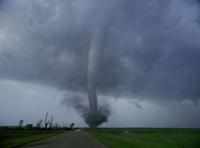
In the United States, most devastating tornadoes occur in Tornado Alley, which is a strip of land between the Appalachian Mountains and the Rocky Mountains, including most American Midwest states. In 2013, there were 811 confirmed tornadoes in the United States, 57 in Europe, and 3 in China. Among 811 tornadoes in the United States, most, especially the most devastating ones, occurred in Tornado Alley. Scientists say that building three 300 meter high and 50 meter wide walls, at the cost of about $160 million each — the first close to the northern boundary of the Tornado Alley, maybe in North Dakota; the second one in the middle, maybe in the middle of Oklahoma and going to east; the third one in the south of Texas and Louisiana – would significantly reduce, if not eliminate altogether, the threat of devastating tornadoes in Tornado Alley.
-
-
Making nuclear power plants more resilient during earthquakes
Researchers in Finland are examining current nuclear power plants’ structure to see where improvements could be made to make them more resilient during earthquakes. Finland currently is building new nuclear power plants, and within ten years, the country expects to be getting 60 percent of its electricity from nuclear plants.
-
-
N.C. “rolling” 30-year sea level rise report gaining support from both sides
In 2010, coastal developers and Republican legislators in North Carolina were alarmed when a state science panel warned that the Atlantic Ocean is expected to increase by thirty-nine inches along the state’s shores by the end of the century. The state legislature soon ordered a four-year moratorium on official sea-level predictions and gave the Coastal Resources Commission(CRC) guidelines for developing a new official state forecast. In May, Frank Gorham III, chairman of the commission, announced that the next forecast will only predict sea-level rise for the next thirty years, a time span during which model-based predictions about sea level rise along the North Carolina coast – about eight inches — are largely accepted by both sides to the climate change debate. Gorham stresses, however, that he wants a “rolling” 30-year forecast to be updated every five years.
-
-
Experts urge deployment of earthquake warning system in California
Scientists say that California has “99.7 percent chance of experiencing a severe earthquake — magnitude 6.7 or higher on the Richter scale — within the next 30 years.” These scientists are urging Congress to consider funding the full-scale deployment of an early-warning earthquake system on the western coast of the United States following successful testing of a prototype and positive results from similar international systems.
-
-
L.A. to catalog buildings at risk of collapse during a major earthquake
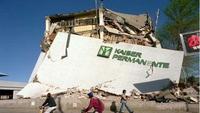
After years of efforts to get officials to catalog buildings at risk of collapse during a major earthquake, Los Angeles City Council late last month instructed building officials to establish a database of such buildings. About 29,226 buildings built before 1978 are subject to survey, but city officials would use mapping programs to narrow down which structures need further field inspection. The city estimates roughly 5,800 buildings are at risk, and an additional 11,690 buildings will need inspection on site to determine whether they are soft-story buildings or not. Los Angeles has yet to decide what to do once it compiles the list, and whether to require retrofitting of vulnerable buildings, but seismic experts and policymakers insist that finding out which buildings are vulnerable is a necessary first step.
-
-
Innovative projects seek emergency housing alternative to FEMA’s trailers

Brownsville, Texas may soon become a model for other hurricane-ravaged cities as community groups institute new emergency housing measures in the wake of inexcusable hold-ups on the part of the Federal Emergency Management Agency (FEMA) in providing reconstruction support to the South Texas coast after $1.35 billion in damage from Hurricane Dolly in 2008.
-
-
Shortage of cybersecurity professionals a risk to U.S. national security
The nationwide shortage of cybersecurity professionals — particularly for positions within the federal government — creates risks for national and homeland security, according to a new RAND study. Demand for trained cybersecurity professionals who work to protect organizations from cybercrime is high nationwide, but the shortage is particularly severe in the federal government, which does not offer salaries as high as the private sector.
-
-
China creates artificial lands in disputed waters to boost sovereignty claims
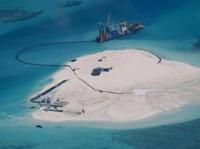
The Chinese government has been implementing a policy of creating new islands on the reefs and shoals of the South China Sea in order to further Chinese territorial claims to the area and increase sea-based infrastructure. By moving sand and other building materials onto these very shallow reefs, such as the Spratly archipelago, new islands are formed which officials say will eventually support buildings, humans, and surveillance equipment. According to the United Nations Convention on the Law of the Sea, by creating the lands, China will have economic rights within a 200 mile zone of each location.
-
-
A new way to detect leaks in pipes
Explosions caused by leaking gas pipes under city streets have frequently made headlines in recent years, including one that leveled an apartment building in New York this spring. But while the problem of old and failing pipes has garnered much attention, methods for addressing such failing infrastructure have lagged far behind. Typically, leaks are found using aboveground acoustic sensors, which listen for faint sounds and vibrations caused by leakage, or in-pipe detectors, which sometimes use video cameras to look for signs of pipe breaks. But all such systems are very slow, and can miss small leaks altogether. Self-propelled robotic device can speed through pipes, pinpointing leaks more accurately than existing methods.
-
-
Inexpensive seismic alert device may help Mexico City residents
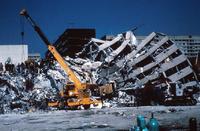
Mexico City has been experiencing an unusually large number of tremors within the past few months, and though the country has one of the most advanced seismic alert systems in the world, many residents are unable to receive notifications before tremors occur. Mexican regulations limit the sale of government-issued earthquake alert receivers to one private company, but since the receivers cost an average of $310, most families are unable to afford them. Andres Meira, a 39-year-old architect, has designed an earthquake alert receiver, which costs only $54 at retail, which taps into the government’s earthquake alert frequency to notify its users of a pending earthquake.
-
-
Spotting sewage pipes in need of repair -- before they burst
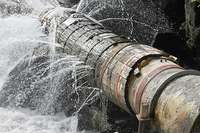
The maintenance of U.S. wastewater collection systems costs an estimated $4.5 billion every year, much of which goes toward fixing or replacing 8,000 miles of sewers. In the future, these annual costs could top $12 billion. Part of the problem is corrosion caused by sewer gases that feed acid-generating microbes, which grown in biofilms on the inside top surface of the pipes.
-
-
Number of structurally deficient bridges in U.S. declines
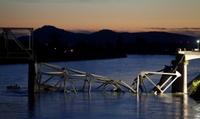
The number of structurally deficient bridges in the United States has declined by 14 percent in the last six years, but despite the improvement, 10 percent of American bridges are in need of maintenance, rehabilitation, or replacement. The average age of bridges in the country is forty-three years old, and most bridges were built to last for fifty-years, so eventually all bridges will become structurally deficient unless they are repaired or replaced.
-
-
Urban man-made drainage may increase risk of flooding
Installing drainage systems in developing towns and cities can cause water to reach rivers more quickly, potentially raising the risk of flooding, say scientists. They suggest that, in some cases, storm drains may do more to increase the risk of flooding than changes in the land surface.
-
-
Towns in northeast U.S. develop adaptation strategies for climate change
In many northeastern towns along the coast of the United States, local officials are attempting to identify and predict the effects of climate change which will occur over the next few decades. “You’re going to feel impacts. It’s a global issue with local effects…We don’t know exactly what’s coming, so let’s plan to be adaptable,” says a leader of a regional climate adaptation project.
-
- All
- Regional
- Water
- Biometrics
- Borders/Immig
- Business
- Cybersecurity
- Detection
- Disasters
- Government
- Infrastructure
- International
- Public health
- Public Safety
- Communication interoperabillity
- Emergency services
- Emergency medical services
- Fire
- First response
- IEDs
- Law Enforcement
- Law Enforcement Technology
- Military technology
- Nonlethal weapons
- Nuclear weapons
- Personal protection equipment
- Police
- Notification /alert systems
- Situational awareness
- Weapons systems
- Sci-Tech
- Sector Reports
- Surveillance
- Transportation
Advertising & Marketing: advertise@newswirepubs.com
Editorial: editor@newswirepubs.com
General: info@newswirepubs.com
2010-2011 © News Wire Publications, LLC News Wire Publications, LLC
220 Old Country Road | Suite 200 | Mineola | New York | 11501
Permissions and Policies
Editorial: editor@newswirepubs.com
General: info@newswirepubs.com
2010-2011 © News Wire Publications, LLC News Wire Publications, LLC
220 Old Country Road | Suite 200 | Mineola | New York | 11501
Permissions and Policies
